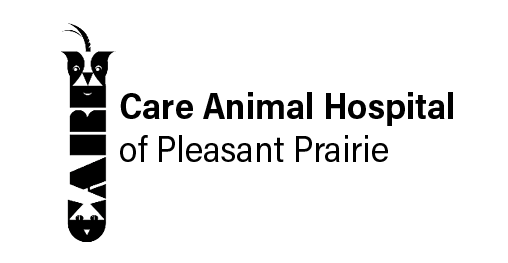*Video currently under construction*
Follow these guidelines for pet friendly medicating:
Set up a comfortable treatment station with a nonslip surface in a quiet area of the home. Take your pet to the treatment station routinely and give a special treat (something super tasty that he doesn’t get all the time) or meal there without doing a treatment. You are putting money in the treatment bank and creating a positive association with the location. Some treatments may be slightly uncomfortable, resulting in a small withdrawal from the bank of positive experiences. Create enough reserves to minimize impact. Once your pet loves going to the treatment station, start practicing the pilling process there. Reach toward your pet’s face, give a small treat, and let the pet eat the treat, repeating several times. As long as the pet is not showing any avoidance or fear, progress to touching your pet’s face by creating a ‘C’ with your thumb and index finger and placing your fingers over your pet’s nose or, for small dogs and cats, over their forehead with your fingers behind their whiskers and lips. Give your pet a treat for accepting this handling. Repeat several times. Begin to tip your pet’s head back, and follow the action with a treat.
Next, with one hand stabilizing the nose/head and tilting it back, use your middle finger on your other hand to touch the front of your pet’s lower jaw. Give a treat. Holding a pea-size treat between your thumb and index finger, tilt the head back, and place your middle finger on the lower jaw. When your pet opens his mouth, place the treat in. Continue to practice, opening the mouth wider for longer periods. Always follow with a treat. When a pill does have to be given, your pet will be relaxed with the process. Make sure to always follow pilling with a treat if medically appropriate.
Oral Medications
1-Medication Incognito. Many pets will consume a pill or capsule hidden in food or a tasty treat such as cream cheese, peanut butter with no sugar or artificial sweeteners, liver paste, hot dogs or canned cheese.
2-Ask your veterinarian if it is okay to crush the pill. If it does not have a strong taste, you can mix the crushed pill with a teaspoon of canned food or tuna or clam juice.
3-Try the 1-2-3 (4-5) trick! Prepare 3 to 5 “treatballs,” with one containing the medication. Give 1 or 2 treatballs sans the medication. While your pet is swallowing the treat, let him see you coming with the next one. Slip in the treatball with the medication, quickly followed by a chaser treatball.
4-Some medications, such as antibiotics, may have a strong odor or bitter taste. Here are a couple of ways to help make them easier for your pet to consume:
Ask if the medication can be compounded into a flavored liquid or chew or made into a small tablet size.
Ask if the medication can be placed in an empty gelatin capsule to minimize the odor and taste.
Some medications, such as antibiotics, may have a strong odor or bitter taste and even result in nausea shortly after administration. Use caution with hiding these types of medications in special food because you risk teaching your pet to avoid the food in the future. Conditioned taste aversion is very powerful, this is especially true with cats who might refuse the food that the medication was hidden in.
Topical Treatments
These include applying routine topical heartworm, flea, and/or tick preventatives, cleaning or medicating ears, administering eye drops or eye ointment, or giving allergy or insulin injections.
One option for administering treatments is the distraction technique. For instance, have a helper hold a bowl of canned food above the dog’s head, requiring him to look up. Once he’s eating, administer eye drops. Or smear some tuna on the counter for your cat to eat while you apply a topical parasite preventive.
If a treatment seems painful to your pet, contact your veterinarian. Reducing and minimizing pain is integral to providing a Fear Free experience.
If distraction techniques aren’t working, contact your Fear Free Certified veterinary professional for guidance.


